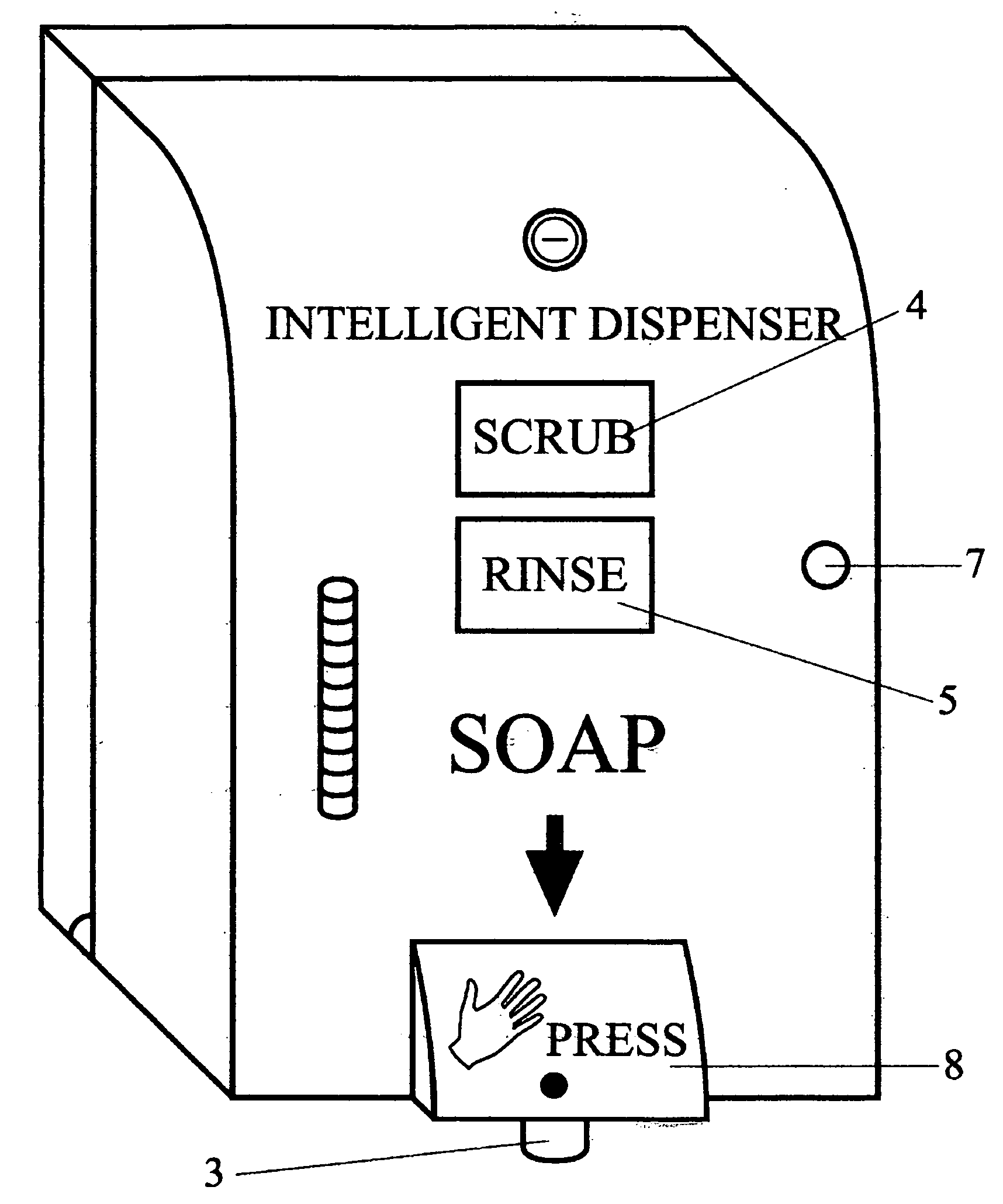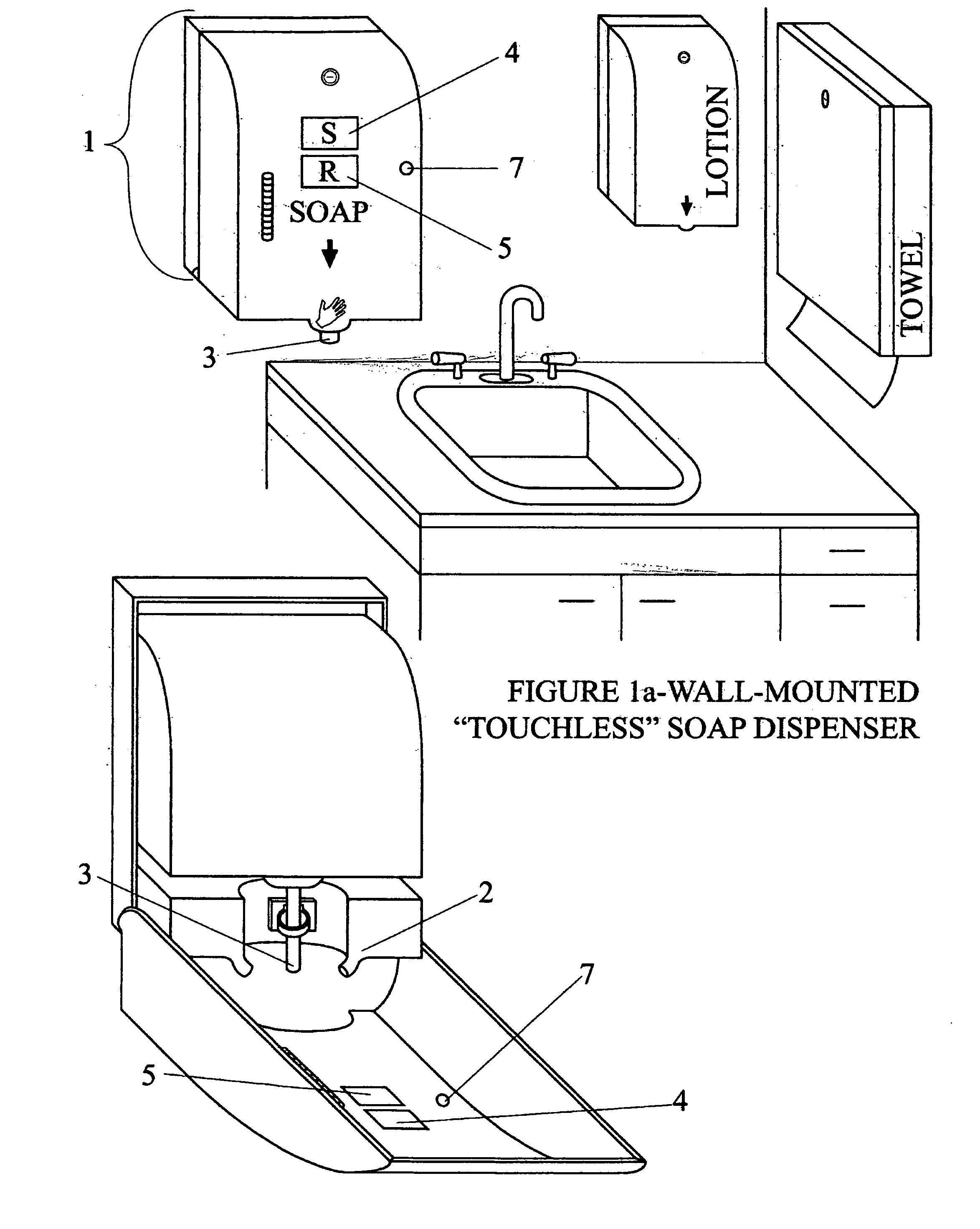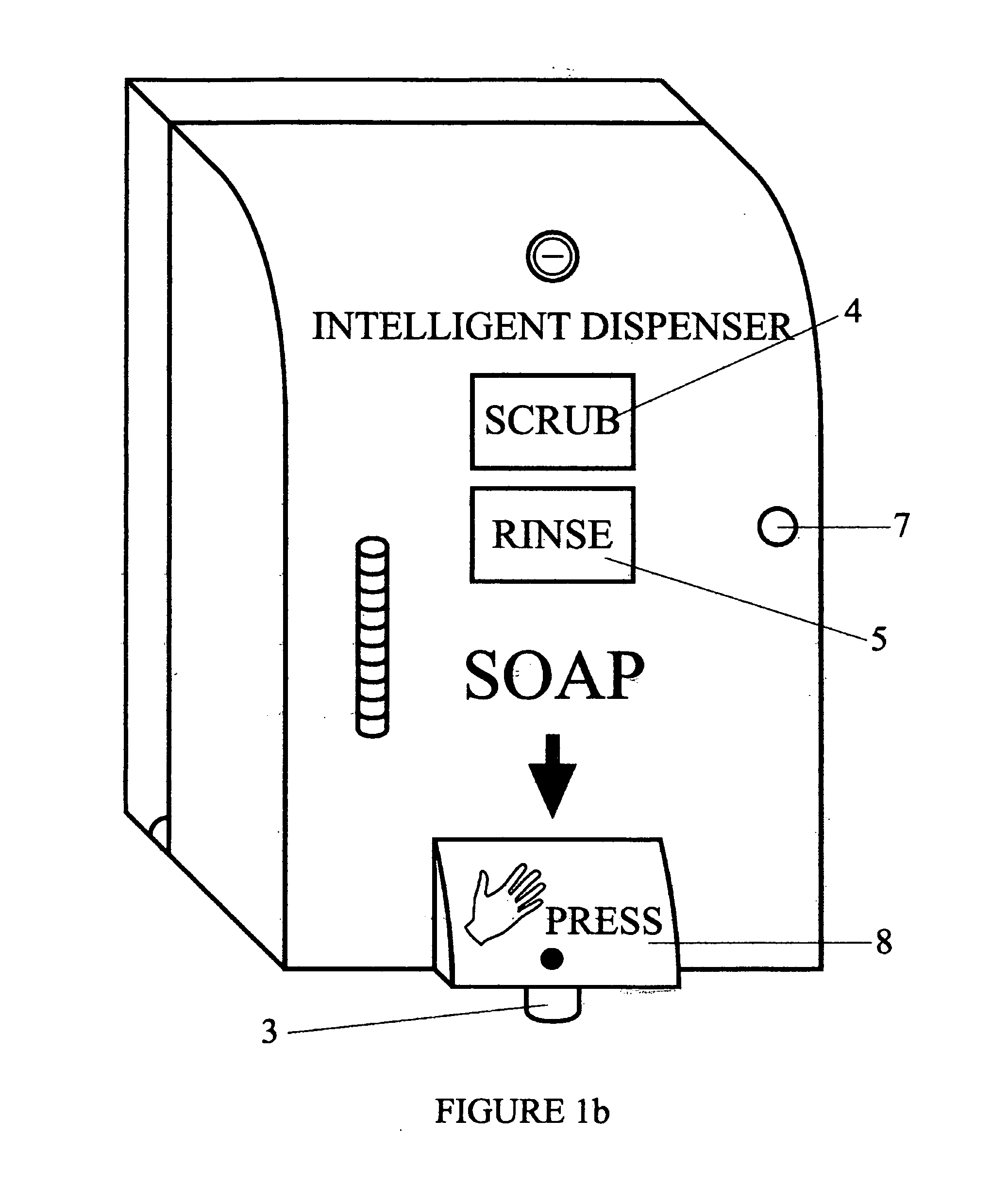Again, billions of dollars in
medical expenses and loss of business resulted yearly.
However, even with all healthcare workers, especially physicians, having the common knowledge as well as the education and training that having
clean hands is the key in reducing infection propagation, most of them do not conduct hand hygiene procedures at the thoroughness and frequency required.
Worst of all, the
intensive care units in hospital typically have the worst hand hygiene compliance
record.
Some tangible reasons were heavy work load, inconvenient location of wash basins,
skin irritation and
dryness due to frequent handwashing, the misconception of wearing gloves would eliminate the need of hand hygiene, etc.
Yet the compliance rate only showed limited improvement when extensive and long term
human monitoring was carried out.
Most restaurant or
food processing plant workers will just casually rinse their hands after using the rest rooms or handling raw meats, thus introducing of E. coli,
salmonella,
hepatitis, etc. to unsuspecting customers.
Not only do customers suffer physically and financially, but enterprises also receive severe economic loss due to sharp decline of business and long term damage to their brand reputation.
At the present, there is only the periodic inspection by health inspectors of local municipalities, which simply cannot improve the adherence to hand hygiene guidelines by
food processing / delivery workers.
If a person can be potentially mis-identified, then the accuracy of the hand hygiene report is in doubt and no worker will likely accept such monitoring, especially if his / her employment or compensation status is linked to such a
monitoring system.
The passive RFID type (commonly used by credit / debit cards for retail transactions) is not suitable for a hand hygiene
monitoring system, since it will require the wearer to
handle his / her ID tag and place it close to a RFID reader.
However, when a RFID reader is located in a wash basin (either integrated into a
soap dispenser or being an independent unit by itself) with several persons wearing active RFID tags standing in front of the basin or walking nearby, the reader will record the ID codes of all those tags and unable to distinguish who is the person actually doing the handwashing.
However, this reader /
detector still can not distinguish who the person is actually doing the handwashing.
A reader will very likely make mistakes in identifying the person undergoing hand cleaning procedure when more than one person is around or just walking by the dispenser.
Yet the fact is very few systems have been accepted into the healthcare settings, restaurants, food
processing plants, etc.
The two main reasons are: (1) they disrupt the regular work routine of a place, and (2) they lack unequivocal accuracy in identifying the personnel.
Some of these prior arts fail to describe how their systems identify the person conducting the handwashing or cleaning; while others dictate that added steps by persons wearing the identification tags to register their tags with the monitoring device (such as swiping through a magnetic reader or placing close to a
radio frequency (RF) reader) to assure proper recording the identify of whom is undergoing the handwashing or cleaning.
For those using active RFID or implying its usage (U.S.
Patent Application No. 2007 / 0257803 and 2008 / 0001763), however, none puts forward a method of correctly identifying the person undertaking the hand hygiene procedure when others are around a wash basin or a rinse-free disinfectant dispenser.
Without this accuracy, any monitoring
system will be useless in its stated purpose.
Also, none of these arts stipulated a method of distinguishing the persons when 2 or more people dispensing
soap or rinse-free disinfectant sequentially within a few seconds from one another at a single wash basin or rinse-free disinfectant dispenser (such as during a
shift change).
Many of the commercial systems and prior arts use flashing beacons and audible alarms as reactive prompts, thus totally destroying the chance of acceptance by workers as well as reducing its effectiveness to nothing.
 Login to View More
Login to View More  Login to View More
Login to View More 


